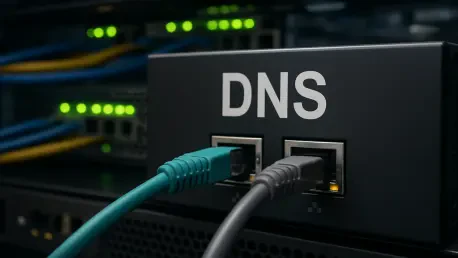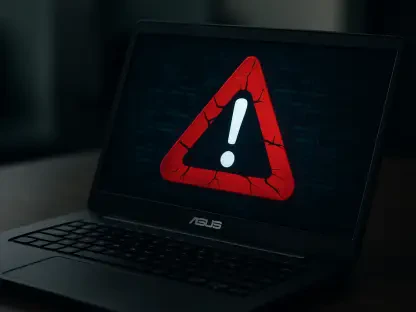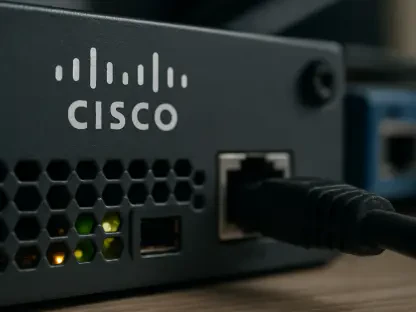In the ever-evolving landscape of cyber threats, securing the Domain Name System has become a critical priority for maintaining both privacy and integrity on the internet. With vulnerabilities that can be exploited for malicious purposes, DNS Security (DNSSEC) aims to fortify this vital component of internet architecture. Despite its introduction to address these security gaps, a significant question remains: Is DNSSEC proving to be the revolution in internet security it once promised to be?
The Core Principles of DNSSEC
DNSSEC, a collection of extensions designed to enhance DNS security, emerged to counteract vulnerabilities inherent in existing systems. Its primary goal is to verify the authenticity of DNS data, ensuring that users receive accurate and unchanged information when accessing web domains. DNSSEC’s significance in the broader cybersecurity framework lies in its intent to shield users from man-in-the-middle attacks and DNS spoofing.
A key principle underpinning DNSSEC is its ability to provide a chain of trust, allowing DNS responses to be authenticated starting from the root server and extending all the way through to individual domains. This hierarchical integrity check is crucial in establishing a verifiable trust model within the DNS infrastructure.
Exploring the Technical Details
DNSSEC Protocols and Mechanisms
Central to DNSSEC’s functioning are its protocols and mechanisms that enforce data integrity. At its core, DNSSEC uses digital signatures to authenticate DNS responses, offering a guarantee that the received data has not been tampered with during transit. The security of these data transmissions relies substantially on cryptographic protocols, which enhance their resilience against common threats. The robust functioning of these protocols ensures that DNS queries result in accurate and verified responses.
Establishing the Chain of Trust
The “chain of trust” is an indispensable component of DNSSEC. It operates by validating queries from a top-down approach, beginning with the root zone and flowing through parent zones to the domain level. Each step ensures that every link in this chain authentically supports DNSSEC. As a result, this security chain solidifies confidence in the domain information being accessed, though it demands that each DNS component complies with DNSSEC requirements.
Innovations and Emerging Trends
The DNSSEC landscape has seen several advancements, reflecting a dynamic shift in both consumer awareness and technological capabilities. Innovations such as automation tools have aimed to streamline DNSSEC deployment, simplifying the complex processes traditionally associated with its implementation. Moreover, there has been a growing trend toward integrating DNSSEC with complementary security measures, such as DNS over HTTPS. These progressive shifts aim to enhance DNS security while drawing more attention to DNSSEC’s critical role.
DNSSEC in Real-World Applications
DNSSEC’s practical implications are notable across various industries where data integrity is paramount. From banking sectors to governmental entities, DNSSEC implementation provides an additional security layer, safeguarding sensitive information from DNS threats. Notable deployments have attempted to leverage DNSSEC for critical infrastructure protection, though challenges exist in fully recognizing its capabilities.
Unique use cases illustrate DNSSEC’s flexibility in adapting to different network environments. However, amid innovation, its horizontal adoption remains limited when compared to more visible security protocols.
Overcoming Adoption Challenges
Despite its theoretical virtues, DNSSEC’s widespread adoption is hindered by technical, economic, and regulatory barriers. The complexity of its integration and lack of immediate user-visible benefits contribute to hesitancy among certain organizations. Furthermore, economic factors, such as cost considerations, play a role in shaping decisions about whether to implement DNSSEC.
Efforts to lower technical barriers and streamline deployment are ongoing, with industry dialogue continuing to explore feasible pathways to increase DNSSEC’s attractiveness to broader markets. The technology’s value proposition remains tied to ongoing improvements in user experience and cost-effectiveness.
A Look Into the Future
DNSSEC may evolve through continued research focus and technological advancements. Future developments hold the potential for breakthroughs that could facilitate a broader adoption rate while enhancing its defensive capabilities against increasingly sophisticated cyber threats. The convergence of advancements in complementary technologies has the potential to significantly amplify DNSSEC’s appeal and utility.
Predictions for the future suggest the role of DNSSEC could become critical in creating a more secure internet ecosystem. Its integration with emerging security technologies may lead to a more comprehensive approach to securing digital infrastructure, benefiting communities at large.
Verdict on DNSSEC’s Trajectory
In summary, DNSSEC’s initial promise as a foundational upgrade to internet security has been punctuated with both progress and obstacles. Its current standing reflects a system with significant potential contingent upon addressing the diverse challenges it faces. As emphasis on securing DNS infrastructures continues, DNSSEC’s core principles may yet form an essential pillar of cybersecurity. The road ahead may reveal further promise as DNSSEC adapts to new demands and environments.
Continuing collaborative efforts to overcome integration challenges and further innovation will be necessary steps toward realizing the full potential of DNSSEC, integrating it effectively into the broader internet security landscape.









